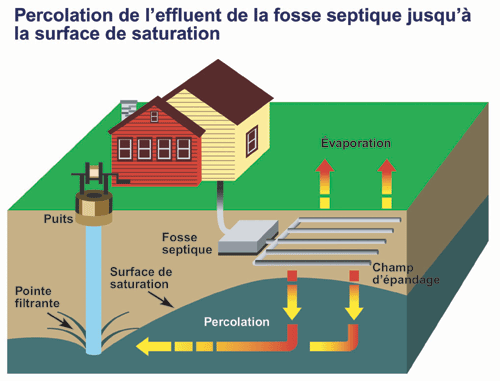Septic tank drainage
Objective
The Municipality is responsible for draining the septic tanks of isolated dwellings in order to ensure compliance with the Règlement sur l’évacuation et le traitement des eaux usées des résidences isolées. Regular emptying and drainage monitoring helps the Municipality to identify and eliminate sources of nuisance, unhealthy or environmental contamination.
Frequency
Any septic tank serving an isolated dwelling used year round or seasonally must be drained once every two years according to the schedule determined by the municipal inspector. However, the owner of an isolated dwelling used on a seasonal basis may apply for a drainage every 4 years by signing an application to this effect. The septic tanks are emptied by sector, as identified on the map below.
Unable to locate map with id: 5
Understand your septic system
There are different types of septic systems. If you do not know the type of your system, consult your installation and / or permit documents or contact the municipal Inspector.
Here is a short guide to easily get answers about septic systems.

Source : Environnement Canada.
Maintaining your septic system
Precautions are to be taken to extend the life of your septic system. Several habits and gestures promote the proper functioning of a device for treating wastewater. For example :
- Make sure you are familiar with the location of the components of your water treatment system;
- Avoid motorized traffic over the components of the treatment device as this may cause breakage of piping, pit or other component of the treatment system. This circulation could also compact the soil and result in poor sewage disposal and treatment;
- Do not plant trees or shrubs near drainage pipes because their roots could obstruct these pipes. Maintain a setback of a minimum of 3 meters;
- Only channel sewage and household water from your home to the treatment system (do not connect foundation or roof drains);
- Use moderately chemicals for housekeeping. Do not reject paint, gasoline, pesticides, oil, antifreeze, or other chemicals in your sinks and toilets. These products are toxic to the bacterial flora of your water treatment system;
- Avoid throwing dental floss, feminine hygiene products, condoms, diapers, cigarette butts, cotton swabs, coffee grind, Cat litter, paper towels or other household items that may cause breakage of the treatment device;
- Use water responsibly and quickly repair leaky faucets and toilets since the greater the water consumption, the more the treatment system is solicited, which increases the risk of malfunctioning;
- Avoid the use of additives. Additives that are sometimes suggested to add to the contents of septic tanks are not necessary. Some are even discouraged because they can impair the proper functioning of the septic tank and scrubber;
- Avoid as much as possible throwing fat into the sink (cooking oils, broths and others) because these accumulate in the septic tank;
- Avoid as much as possible using a waste disposer because they create high loads and a strong accumulation of sludge in the septic tank;
- Follow the recommendations in the manufacturer’s guide.
Source : Site internet du Ministère du Développement durant, de l’Environnement et des Parcs
